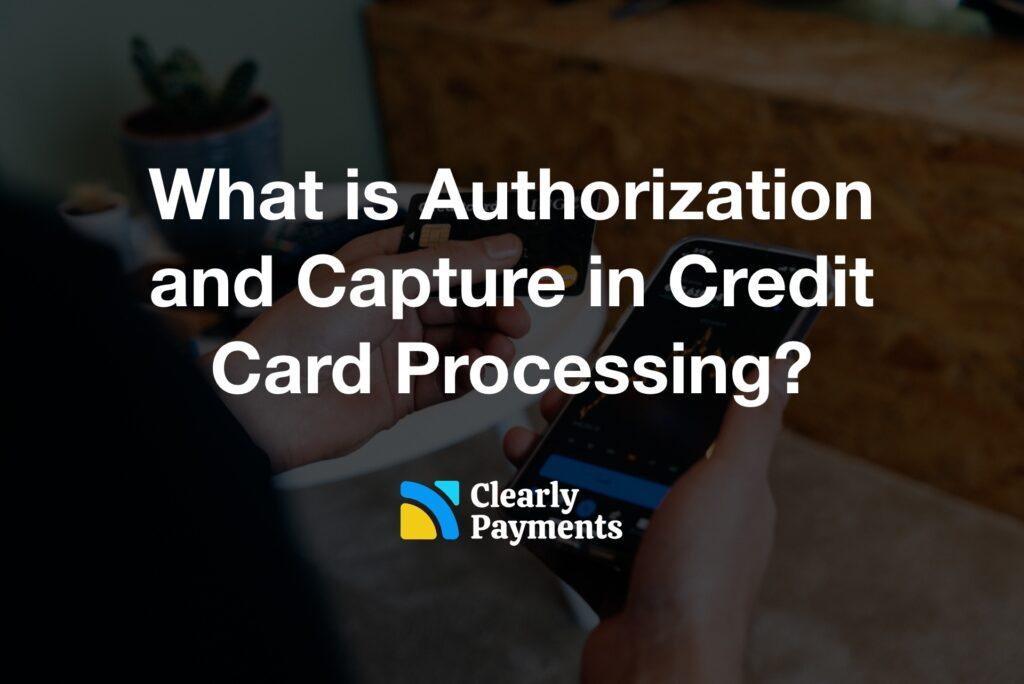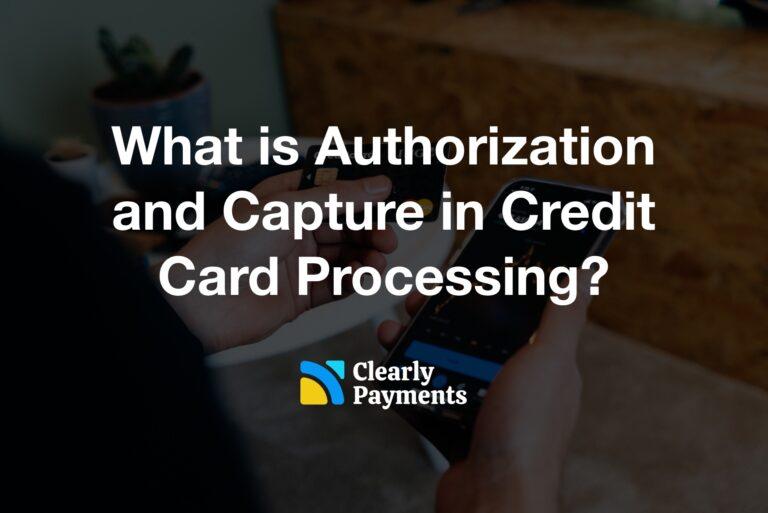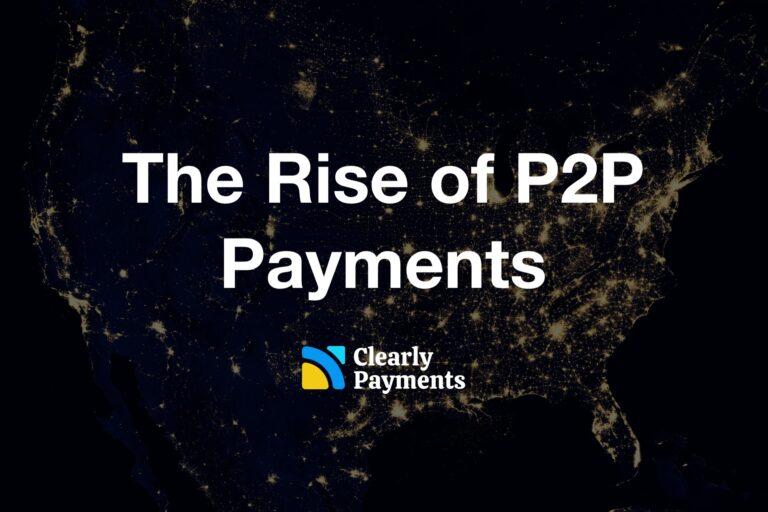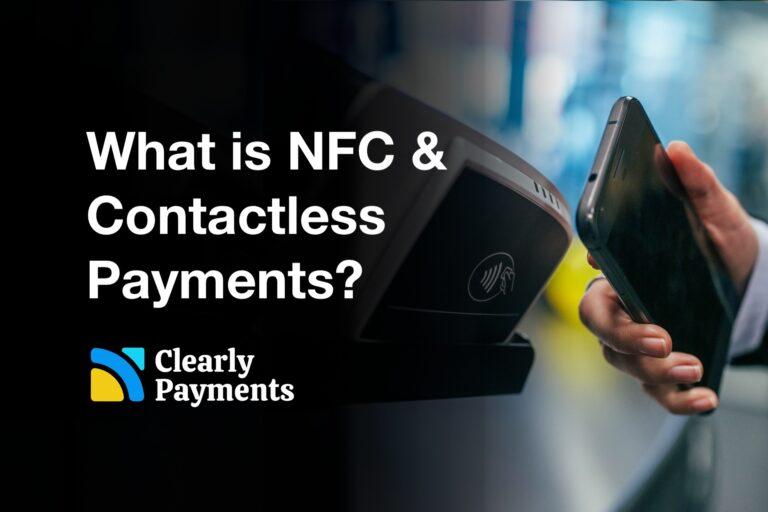In the fast-paced world of commerce, credit card transactions have become an indispensable part of our daily lives. The convenience and simplicity of swiping a credit card or clicking “Buy Now” online mask the detailed processes that occur behind the scenes.
At the heart of credit card transactions is the process of “authorize” and “capture.” In this article, we will cover the inner workings of these essential components of payment processing. We will explore how authorization sets the stage for a financial transaction and how capture finalizes the transaction.
Authorization & Capture Credit Card Transaction
After a credit card transaction occurs, an authorization is initiated at a point-of-sale (POS). It is during this step that the merchant account seeks approval from the customer’s bank (issuing bank), confirming two aspects: the availability of funds and the account’s good standing. If the criteria are met, the transaction amount is temporarily held, or as we call it, “pending.”
Once the authorization is complete, it’s time for a “capture.” In this phase, the transaction is finalized, and the funds are transferred from the customer’s account to the merchant. The status of the transaction shifts from “pending” to “complete,”
In essence, authorization and capture are two distinct yet interdependent parts of a transaction. There are cases where the time gap between authorization and capture is stretched, offering a glimpse into the versatility of this system. A merchant can decide to just do an authorization to verify the credit card and then do the capture at a later date.
Examples of Using Credit Card Authorizations
The world of authorize and capture isn’t confined to a single script. It adapts to various business scenarios, showcasing its flexibility and utility. Here are a couple of real-world examples that exemplify its applications:
eCommerce Pre-Orders
Imagine a scenario where an online merchant offers a product for pre-order but doesn’t have it in stock at the time of purchase. In this case, the pre-authorization occurs at the eCommerce point of sale.
Once the product becomes available for shipping, the capture request is issued, and the customer’s credit card is charged. This elegant maneuver allows businesses to secure orders in advance, enhancing customer convenience.
Hotel Check-Ins
Frequent travelers are likely familiar with this scenario. When you check into a hotel, an authorization-only request is employed to verify your credit card. Typically, the authorized amount is higher than the expected final total to account for potential incidentals or damages. This sum remains on hold until your departure, when you settle any additional charges. In this case, pre-authorization and capture take place days apart, depending on the length of your stay. It’s a subtle but vital part of the hospitality industry’s financial choreography.
In all authorization and capture scenarios, clear communication with the customer is paramount. Whether it’s explaining the pending charge, overage authorization in hotels, or the specifics of pre-orders, transparent communication helps mitigate potential issues and inquiries, promoting a harmonious customer experience.
How Long Can a Merchant Wait Between a Credit Card Authorization and Capture
The time frame for a merchant to capture a payment after authorization can vary depending on the payment processing agreements and regulations. In general, the authorization hold on a customer’s payment method typically lasts for a limited time, which is usually set by the payment processor and can vary.
Common time frames for capturing a payment after authorization include:
- Same-day capture: Many merchants capture funds on the same day as the authorization to ensure the payment is processed promptly.
- Within a few days: Some merchants may have a policy of capturing funds within a specific number of days after authorization, such as within 1, 2, or 3 days.
- Variable capture time: In some cases, the capture time may be determined by the merchant’s internal policies, which can vary widely.
- The maximum amount of time funds can be held is typically 30 days. After this period, the authorization request expires and a new one is needed.
Failing to capture a payment within the specified time frame may result in the authorization hold expiring, and the funds may no longer be available for capture. In such cases, the customer’s payment method may need to be reauthorized, and the transaction may need to be initiated again.
Authorization Reversals
Authorization Reversals are essential in the world of payment processing. They allow merchants to release previously obtained authorizations on customers’ payment methods, ensuring that held funds become available again to the cardholders. This process is crucial for maintaining customer satisfaction, accuracy, and transparency in financial transactions.
Authorization reversals should be initiated when a transaction is canceled, when errors or duplicate authorizations occur, when transactions fail, or when there are significant delays in delivering goods or services. Executed through the payment gateway, the key to successful authorization reversals lies in their prompt execution and effective communication with customers to prevent potential delays and frustrations.
Possible Issues with Authorizations
In the realm of credit card authorization and capture, several common issues and challenges can arise, affecting both merchants and customers. Understanding and proactively addressing these challenges is crucial for ensuring smooth payment processing and maintaining a positive relationship with clientele.
1. Expired Authorization Holds: One of the most prevalent issues is the expiration of authorization holds. These holds have a finite lifespan, usually ranging from a few days to several weeks, depending on the payment processor and card network. When merchants fail to capture the authorized funds within this time frame, the authorization hold expires, resulting in the unavailability of those funds. This can lead to inconvenience and dissatisfaction among customers, and merchants may need to reauthorize the payment or face payment declines.
2. Over-Capturing Funds: Over-capturing occurs when a merchant captures an amount greater than what was initially authorized. This can be due to errors in processing, system glitches, or misunderstandings in the authorization amount. Over-capturing can lead to disputes and chargebacks as customers may contest the unauthorized charge. Merchants should be vigilant and ensure that they capture the correct and authorized amount to prevent such issues.
3. Lack of Communication: Ineffective communication with customers regarding authorization holds and reversals can lead to misunderstandings and complaints. Customers may be unaware of the temporary nature of authorization holds and become concerned when they see funds being held but not yet captured. It’s essential for merchants to communicate clearly and provide information about when funds will be released or captured, especially in cases of delayed deliveries or services.
4. Compliance and Regulation: Adhering to card network rules and local regulations can be a complex challenge for merchants. Non-compliance can result in fines, penalties, and disputes. Staying updated on changing rules and regulations is essential to avoid legal and financial consequences.
5. Technical Glitches: Technical issues, such as system failures or outages, can disrupt the authorization and capture processes. These glitches can lead to delays in transaction processing and negatively impact the customer experience. Merchants must have contingency plans and backup systems in place to mitigate the impact of technical challenges.
Addressing these common issues and challenges requires a combination of proactive management, clear communication, and compliance with industry regulations. By staying informed, implementing best practices, and utilizing robust payment processing systems, merchants can minimize these challenges and ensure a seamless payment experience for their customers.




